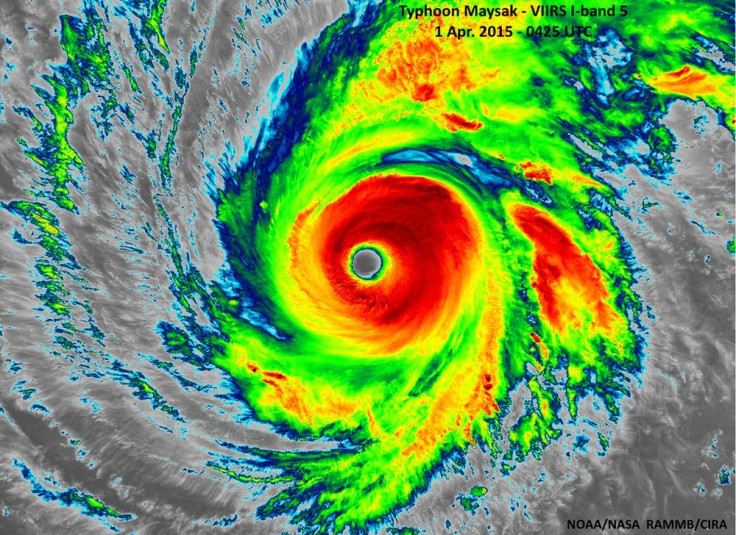Philippines Braces For Another Super Typhoon Within Next 72 Hours; Maysak Kills 5, Causes Extensive Damage In Micronesia

In November 2013, just a few weeks before Christmas, super storm Haiyan (Yolanda) battered the Visayas region of the Philippines, wrecking the Yuletide holiday for thousands of Filipinos.
This week, as the only predominantly Catholic country in Asia takes a break for another major Christian holiday – Easter – another super typhoon, Maysak (Chedeng), is expected to hit the country on Saturday or Sunday. Maysak is a category 5 typhoon with winds of up to 225 kph, according to the Philippine weather bureau, reports Reuters.
Although it is expected to weaken when it hits central or northern Luzon, the military has been placed on alert as early as Wednesday. It had prepared food and medical supplies in anticipation of Maysak’s landfall within the next 72 hours.
Tropical Storm Risks, based in Britain, forecasts Maysak would likely weaken to category 2 when it makes a landfall. Its projected winds would up to a maximum of 175 kph.
Although the typhoon could cause damage to agriculture, it would be minimal because most of the rice and corn crops have been harvested in February. However, the bigger challenge is the bulk of foreign and local tourists who go to Baguio City for the Holy Week break.
The Easter break coincides with the end of the academic year, so it is summer break for millions of Filipino students. Many of those who study in the cities, where the big colleges and universities are located, also go home to their respective provinces during the two-month summer break.
As of Wednesday, Maysak had battered Micronesia and caused extensive damage, reports the Sydney Morning Herald. There are at least five dead in the state of Chuuk and residents fear of starving if aid does not reach them soon. The damage to crops and water supply contamination had led Chuuk Governor Johnson Elimo to declare a state of emergency, said Micronesian President Manny Mori.
To contact the writer, email: v.hernandez@ibtimes.com.au





















